Polyculture offers option for major challenge in catfish, other aquaculture ponds
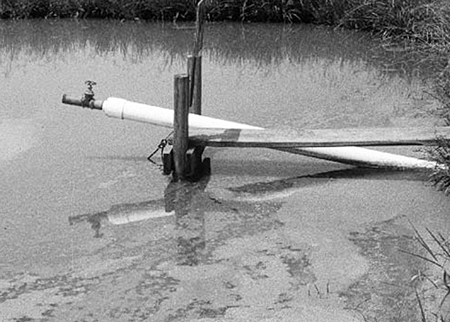
Pond-based aquaculture systems worldwide typically have largely unmanaged phytoplankton algae populations. Negative impacts from these uncontrolled populations can provide a major production challenge, especially in intensive culture where the phytoplankton populations are dense and often dominated by cyanobacteria (blue-green algae).
Disease and mortality are increased by stressful levels of oxygen, unionized ammonia, and nitrite. These common problems often result from fluctuations in algal populations, and algal “die-offs” can occur in extreme cases. Emergency aeration is required when oxygen is low, which again is influenced by changes in algal populations and during hot weather by the respiration of the algae themselves.
Algal toxins and off-flavor
Algal toxins, common in the marine environment and culture systems, may be appearing in freshwater environments. Recent diseases like Visceral Toxicosis and High-Chloride Toxicosis are thought to be algal toxin-related. Major earthy and musty off-flavors are the direct result of several cyanobacteria species that release the off-flavor compounds geosmin and methylisoborneol into pond water as metabolic byproducts.
In the United States, channel catfish, baitfish, and hybrid striped bass are major freshwater pond culture species impacted by some or all of the above effects. Saltwater pond culture or holding of shrimp, oysters, and clams has also been affected by offflavors when salinities drop below 10 ppt. At intensive levels of production, the other negative impacts from dense algae populations would be expected, as well.
Channel catfish production
Channel catfish ponds are cost-efficient, large-scale, sustainable production systems. Little or no effluent is released, as the ponds are not drained for harvest, and they use a multibatch, partial harvest system. Maintenance draining may occur after 6 to 10 years. Less than 5 percent fishmeal is used in the largely grain-based diets. The industry offers a model for efficient, environmentally responsible mass production – and thus consumption – of moderately priced, high-quality cultured seafood.
Substantial production costs are incurred from algal-related problems. This includes much of the average 10 percent annual fish mortalities, and off-flavorrelated holding with additional mortalities. Ponds may not naturally cycle to “on-flavor” for a period of months to a year. When fish are finally harvested, dockage can result from oversized fish. Algal control could save the catfish industry millions of dollars in production costs and thus lower farms’ break-even prices.
Similar costs are certainly being incurred in other intensive freshwater cultures and saltwater production. For example, substantial cases of the littleknown blue-green algae disease are reported in the Arkansas baitfish industry, and dinoflagellate-caused “red tide” mortality of red drum has been reported in Texas.
Managing off-flavor
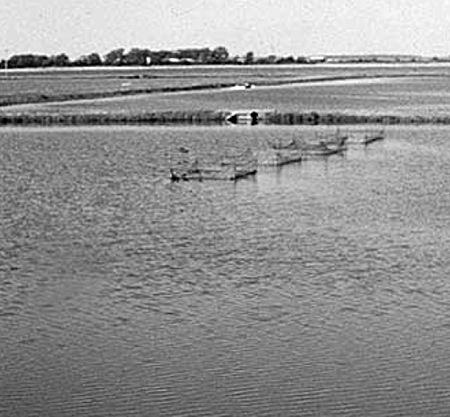
In the catfish industry, efforts to manage algae have mainly centered on off-flavor control. Several research lines have been investigated, including chemical control and biological control.
Chemical control is currently being recommended through weekly additions of low doses of the herbicide copper sulphate. In 0.4-ha experimental ponds, the break-even price required to cover variable costs was reduced by U.S. $0.19 per kilogram through reduced off-flavor and thereby reduced mortality from shorter holding of marketable fish. However, over a period of 10 years, the levels of copper in sediments without removal would be approximately 36 grams per square meter on pond bottoms.
Biological approaches explored have included the addition of filter-feeding macroorganisms (FFM), bacterial and viral agents, and natural control products such as tannins. The only microorganism known to consume the large cyanobacteria typical of intensive production ponds is the protozoan ciliate Nassula.
Recent research with FFMs
The author recently evaluated the ability of 11 FFMs to control pond algae in 500-liter outdoor plankton mesocosms at the University of Arkansas at Pine Bluff Aquaculture Research Station in Arkansas, USA. FFMs were stocked at 1 kilogram per cubic meter, or 10 times the rate judged necessary from previous studies to impact algae composition.
The FFMs included nine fish species and hybrids and two local unionid clams, all 10 to 15 mm in length. Silver carp, threadfin shad, and blue and Nile tilapia were promising for off-flavor algae control, and silver carp and blue and Nile tilapia for overall algae control (Table 1). In this table, the reduction in chlorophyll a represents a short term impact. In longer trials, more desirable algae species and stable blooms result, but not reduced algal abundance.
Pershchbacher, Filter-feeding macroorganisms effective in algae control, Table 1
| Species | Change (%) in Chlorophyll a | Change (%) in Off-flavor Species |
|---|---|---|
| Nile tilapia | -40.0 | -92.9 – 100.0 |
| Blue tilapia | -28.3 | -94.5 – 100.0 |
| Silver carp | -53.5 | -89.5 – 100.0 |
| Threadfin shad | +419.0 | -88.0 – 100.0 |
Silver carp behind barrier nets, and blue tilapia and Nile tilapia in cages were further evaluated in 0.04-ha experimental channel catfish production ponds. The FFMs were not fed and yielded 1,136 to 2,272 kilograms per hectare additional production.
Tilapia cage system
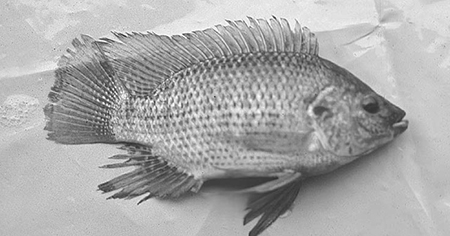
The tilapia cage system was a feasible system to implement, produced good algae control 30 days after stocking, and resulted in an additional marketable product. Nile tilapia, the more commonly cultured of the two tilapias, were scaled up to net pens and in 1.0- ha blue catfish fingerling production ponds at the Joe Hogan Arkansas State Fish Hatchery.
Improvements in the flavor quality of the catfish, with added benefits to water quality, were associated with the presence of 5,000 tilapia per hectare in 2.5 net pens per hectare. Off-flavor algae were eliminated or reduced below problem levels. Water quality improvements included reduced emergency aeration, lowered ammonia levels, more stable (but not reduced) algae populations, and more desirable algal species that did not produce off-flavors and scums.
Subsequent evaluation of the Nile tilapia cage system was performed at the commercial channel catfish farm of Dickie Odom in Alabama, USA. Nile tilapia in cages attained 0.9 kg in one growing season.
Nile tilapia studies with the catfish Clarias have been conducted in Thailand. Clarias were confined in cages and fed, with the tilapia free-ranging in the pond, feeding on catfish wastes and other pond organic matter. Studies are also beginning on the polyculture of Macrobrachium freshwater shrimp with caged tilapia in Kentucky, USA.
Cost benefits
The combined cost benefits from off-flavor control, water quality improvements, and lowered catfish feed conversion ratios (noted in earlier 0.04-ha production trials that attributed better feed conversion to consistent feeding from improved, stable water quality) can double the savings from off flavor control to U.S. $0.37 per kilogram.
Genetically male Nile tilapia (GMT), a potentially improved tilapia, were also evaluated in the net pen trial. Growth of GMT tilapia without feeding was 20 percent higher than that of the mixed-sex Nile tilapia. In addition, escapement of GMT fish would not pose a problem of overpopulation in the pond. As an exotic, tilapia in climates with water temperatures above 15 degrees-C may need to be sterile or in systems with no possibility of escape to the surrounding waters.
The cost of a GMT tilapia net pen system would be on the order of U.S. $0.11 per hectare of catfish production, although tilapia systems could add additional revenue from sales of the 1,136 to 2,272 kilograms per hectare filter fish.
Additional work needed
While these results are promising, major concerns are sources for tilapia fingerlings and markets for the tilapia harvested at the end of the season. Additional research and field trials will be necessary to properly address these concerns.
Strategies to maintain water quality benefits and attain marketable fish sizes would require looking at different-sized tilapia fingerlings (including advanced starting in greenhouse or heated ponds with purchased or farmer spawned fingerlings) and additions of supplemental feed throughout the growing season or as a finishing feed.
Tilapia would have to be harvested by November or before acute lethal temperatures of 4 to 6 degrees-C were attained. Blue tilapia may have an advantage in temperate climates due to their slightly greater cold tolerance compared to Nile tilapia.
Existing markets for fillets and frozen fish could utilize 0.7 to 0.9 kg fish, which is possible with large fingerlings and some supplemental feeding. New markets would be required to market fish smaller than 0.5 kg.
(Editor’s Note: This article was originally published in the June 2003 print edition of the Global Aquaculture Advocate.)
Now that you've reached the end of the article ...
… please consider supporting GSA’s mission to advance responsible seafood practices through education, advocacy and third-party assurances. The Advocate aims to document the evolution of responsible seafood practices and share the expansive knowledge of our vast network of contributors.
By becoming a Global Seafood Alliance member, you’re ensuring that all of the pre-competitive work we do through member benefits, resources and events can continue. Individual membership costs just $50 a year.
Not a GSA member? Join us.
Author
-
Peter Perschbacher, Ph.D.
Department of Aquaculture and Fisheries
University of Arkansas at Pine Bluff
Box 4912
Pine Bluff, Arkansas 71611 USA[117,100,101,46,120,101,97,117,64,114,101,104,99,97,98,104,99,115,114,101,112,112]
Tagged With
Related Posts
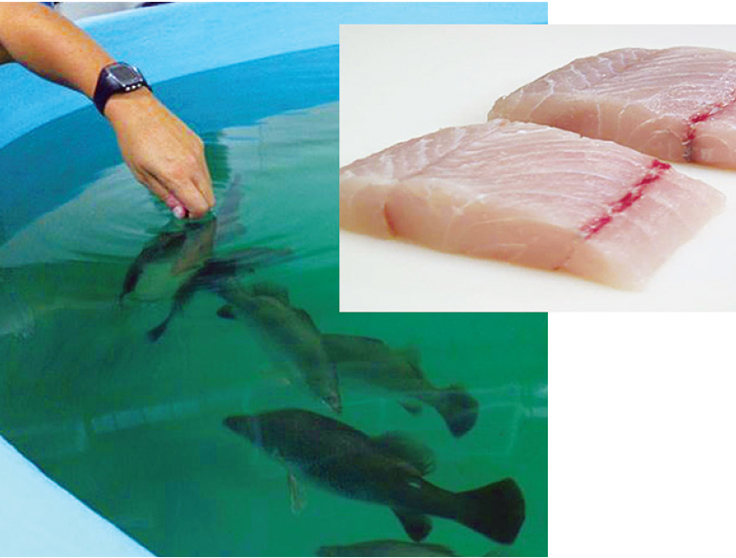
Intelligence
Adding flavor complexity to farmed barramundi
Organoleptic attributes such as flavor and aroma are among the most important factors that influence consumer acceptability and demand for fish products. Consumers have identified farmed fish as less complex and lacking “sealike” or “sea-fresh” flavors and aromas.
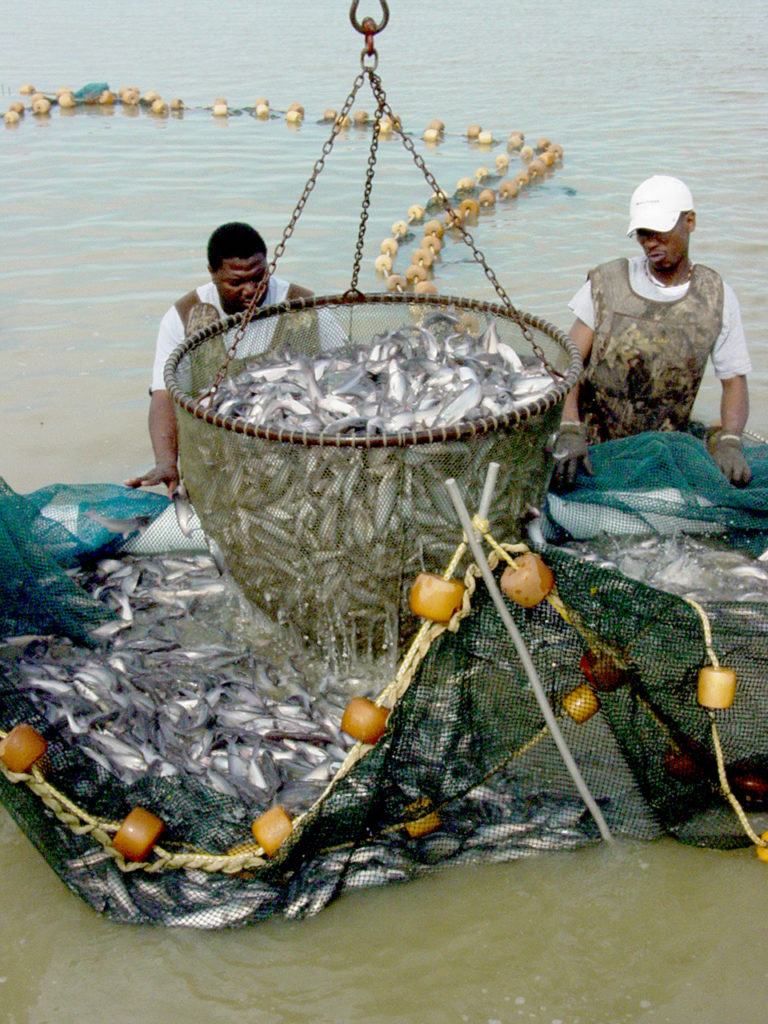
Intelligence
Common off-flavors in channel catfish following partial pond harvest
The authors conducted a study to determine whether channel catfish systematically develop off-flavors after partial harvest as well as the possible origins of the flavors.
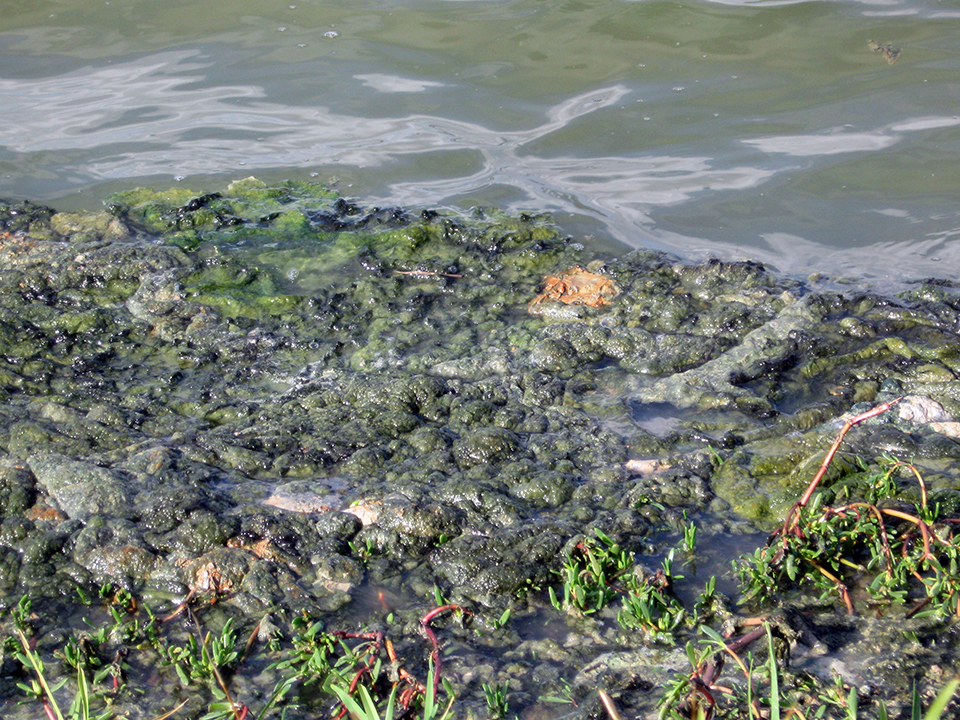
Health & Welfare
Blue-green algae pose toxic risks in shrimp, fish culture
The toxins from blue-green algae pose a threat to animal health and potentially to consumers if they are present in farmed product. Culture animals that ingest these toxins may not die, but can be weakened, increasing their susceptibility to pathogens.
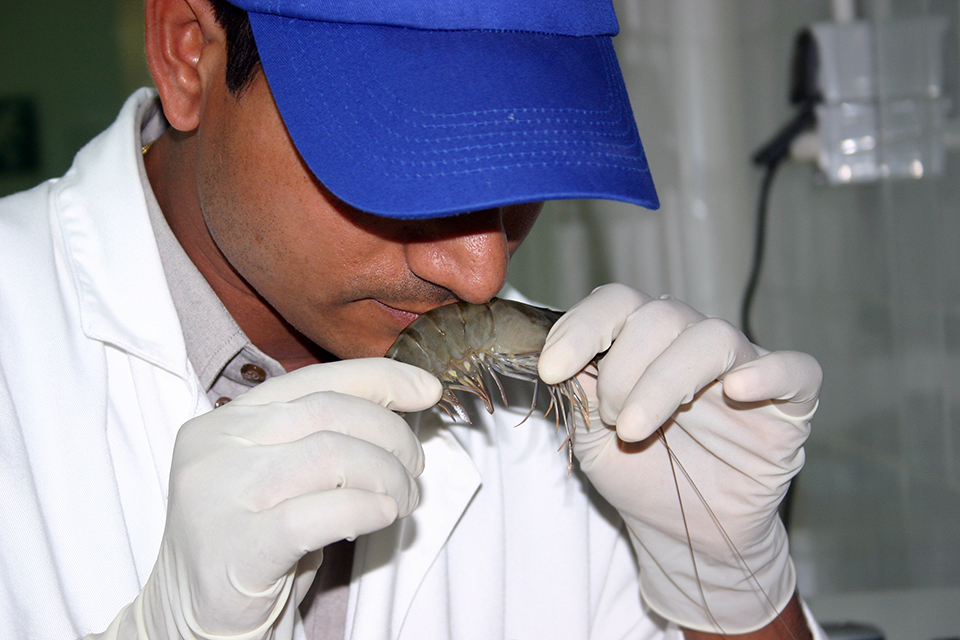
Intelligence
Off-flavors in aquaculture products, part 1
Off-flavors in pond and recirculating aquaculture systems have occurred through the biological production of geosmin and 2-methylisoborneol. The compounds are rapidly absorbed through the gills of fish, but depuration can require days or weeks.


